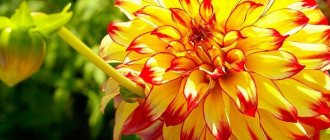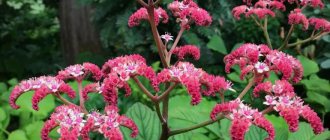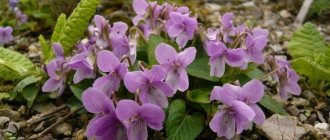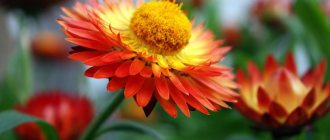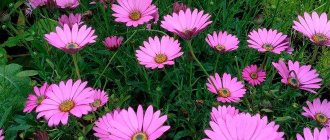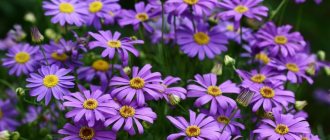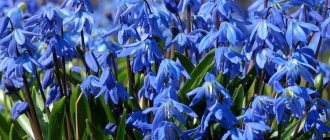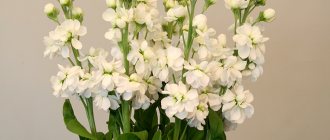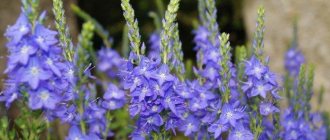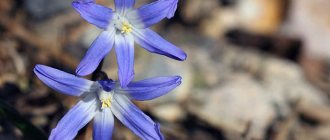- August 21, 2018
- Medicinal plants
- Anna Mallaalieva
Among the large number of herbaceous plants, hellebore heleborus (there is a photo in the article) stands out. This is due to the fact that the flowers are winter. The second name of the plant is Christmas rose. This flower was first bred in the Mediterranean. It gained fame due to its medicinal properties. Thanks to it, paralysis, gout, skin and gynecological problems, and epilepsy were previously eliminated. In addition, hellebore is now used for weight loss.
You should not pay special attention to the appearance of the plant. It is poisonous. When taking medications that contain heleborus, you must strictly follow all the doctor’s recommendations. Particular attention should be paid to the dosage. Under no circumstances should you exceed the permissible daily dose.
For gardeners, this plant is considered ideal: it is green all year round. They can decorate a shady place. Even under the snow, hellebore will look as attractive as possible.
At the moment, there are several natural and hybrid species. The plants have no stem. Flowers can reach up to five centimeters in diameter. The petals range in color from white-cream to pale red.
Where to plant hellebore? Landing location
Planting hellebores and caring for them must be carried out according to the rules. To make the plant happy for a long time, you need to find an area where there will be light shade. Due to this, the plant will constantly bloom, and the leaf blade will acquire a bright and rich shade.
Direct sunlight on hellebore causes it to wilt and deteriorate in color. The midday period is especially dangerous. It is at this time that the sun has the worst effect on the plant.
If we talk about beauty, then it is best to plant the described plant in a garden of coniferous trees. It will fit perfectly because of its evergreen color.
What should the soil be like?
What do you need to know to plant hellebore and care for it? Properly selected soil plays an important role in the life cycle of a plant. The plant prefers alkaline soil. If this is not the case, then a neutral one will do. On the turf under the trees, hellebore grows quite actively. If the soil has constant acidic reactions, then lime and ash should be added to it. The plant will grow better if it is constantly fertilized. You can use tea peels as “additives” for soil.
If you are not 100% sure that the soil is ideal for the plant being described, then you can take some soil from the nearest forest. In terms of composition and structure, this soil is ideal. It can also be used to fill the planting hole and the area around the plant.
How to water a plant?
The article presents a photo of the hellebore flower. In order for it to be just as beautiful, it is necessary to water it correctly. If the plant grows in a snowy region, then there is no need to create an artificial irrigation system. This is due to the fact that due to melt water, the earth is constantly moistened.
Hard leaves do not evaporate liquid, but in hot weather the plant still needs constant watering.
Hellebore: types and varieties
Several types of hellebore are popular for growing in open soil.
Black (niger)
The most common and one of the most attractive types. Perennial 30 cm high. Flowers 8 cm in diameter bloom on long peduncles in early April. They are white inside, pale pink to black outside. The leaves are leathery, dense, dark green. The species is very frost-resistant, can withstand temperatures of –35 degrees.
Popular varieties of black winterweed:
- Potter's Will;
- Pracox;
- HGC Josiah.
Eastern (orientalis)
A shrub about 0.3 m high. Cream flowers with purple streaks with a diameter of 5 cm. The species can grow in different regions, except permafrost.
Oriental hellebore varieties:
- White Swan;
- Blue Anemone;
- Rock and Roll.
Smelly (foetidus)
Plant 20-30 cm high with leafy stems. The leaves are divided into narrow, dark green, shiny segments. Multiple green flowers with a brown border bloom on tall peduncles about 0.8 m long. The species is distinguished by its high drought resistance.
Caucasian (caucasicus)
An evergreen shrub with leathery leaves on long petioles. At the end of April, large drooping flowers bloom on peduncles 20-50 cm long, the shade of which is greenish-yellow or white with green. The species is winter hardy and does not shed its leaves even in winter.
Corsican (argutifolius)
Perennial up to 75 cm high. Stems are erect, quickly growing in width. The flowers are cup-shaped, green-yellow, collected in large racemes. In temperate latitudes, flowering begins in April. For the winter, the plant needs shelter.
Fertilizer use
The hellebore in the photo looks luxurious. This flowering can be achieved by using fertilizers. Mulch will protect the plant's roots from being exposed. This substance begins to decompose over time, turning into fertilizer.
Other additives may not be used (this is confirmed by reviews). This is due to the fact that the air saturates the plant with mineral nitrogen, and the soil with minerals. That is why additional fertilizers should not be applied.
Planting and transplanting
Hellebore is a plant that should be planted exclusively in the autumn season. By winter the flower will have time to take root well. This will allow him to survive the winter without much difficulty. The plant grows by self-seeding. If this process is not controlled, a colony will eventually be created.
Due to self-seeding, the beauty of a flower bed or lawn is spoiled. Therefore, it is important to destroy temporary processes. In order to rejuvenate the flowerbed, you should dig up a young plant and replant it. This will get rid of old plants.
In addition, you need to make a hole no more than 30 cm. This is due to the fact that the root of the plant itself is small. Accordingly, the hole should not be too large. If you have patience, time and opportunity, then you should lay out pebbles and sand at the bottom. Thanks to this approach, good drainage will be present. It will protect the plant from diseases. This approach will be especially appropriate if the flower is flooded in the spring. The soil should be neutral or slightly alkaline. It should not be sour under any circumstances. Ideally, it should be rich in humus and turf. The latter provides looseness. Seedlings should not be pushed too deep into the holes. Watering should be done moderately. The soil should be moistened, but not too much, otherwise the plant may quickly die.
You need to monitor humidity for the first week after planting. Watering occurs every day. Approximately 1 liter of water should be used. You only need to pour it under the bush. If the weather is humid or there has been rain, then you don’t need to water that day.
Growing hellebore
Hellebore propagation
The Hellebore flower is propagated in three ways - by dividing the bush, self-sowing and seeds.
The best option for propagating hellebore is using seeds . Seeds can be planted immediately after the cathedral, or the following year. Sowing is done to a depth of 1 cm. The hellebore seeds themselves are large and germinate well, but usually only in the second season after planting. The flowering of the plant itself begins in the third or fourth year. The Hellebore flower will grow normally in one place for ten years.
Hellebore planting site
For this planting of the Hellebore flower, it is recommended to choose semi-shaded areas of the garden, for example, under the crowns of large trees or shrubs. Hellebore does not like direct sunlight.
Hellebore can tolerate frost well, however, in our climate it is better to cover the plant with leaves during the winter. As for the middle latitudes, it winters well without any shelter.
Watering and soil
You don’t need to water too much or too often – hellebores don’t like stagnant liquid in the soil. But the soil should not be allowed to dry out. The soil should always be moderately moist, rich in lime, well drained and fertile. After flowering is completed, mulch with compost. Without lime and mineral fertilizers, the risk of fungal diseases increases.
Hellebores need bedding for the winter; for this, fallen leaves of oak, apple or linden are usually used. The litter not only warms the plant in cold weather, but also protects it from fungal diseases.
If propagation is carried out by division, it is necessary to divide only young plants, then the divisions will take root better and will not get sick. It’s the same with transplanting - adult hellebores do not like transplanting. However, you should also be careful with young plants - do not dry out the root system.
Planting in spring time
If desired, you can plant the plant in the spring. However, the hole should be slightly larger than the root itself. You need to put compost or humus at the bottom. The bush is installed in a vertical position. The root should be straightened, then it will not bend. Next, you need to sprinkle the root with soil, holding the hellebore flower with your hand. The planting level should be the same as in the seedling pot. A deviation of a couple of centimeters is allowed. After planting, the plant needs to be watered abundantly.
Reproduction using seeds and dividing the bush
The plant should be planted either in spring or autumn. When dividing a bush, you need to carefully dig it up and wash it. This way you can easily see growth points. Using a sharp knife, you need to cut the bush into pieces. You should take at least 2 sprouts per division.
When propagating hellebore flowers, the vegetative or seed method is used. The first one is considered the most effective. The seed method is not famous among gardeners for positive reviews, since a large number of seeds die off over time. In addition, it is almost impossible to find seeds for free sale.
Autumn care, seed collection and wintering
Seed ripening begins in June, and the process lasts all summer. Then the seed pods open and the seeds spill out onto the ground. If you need to collect seed material for further propagation of the crop, you need to select a pair of suitable flowers in advance. Tie gauze over the ripening boxes. The seeds will fall out on their own. They need to be dried for some more time in a well-ventilated area and immediately sown as seedlings or in open ground.
Although most types of hellebore are quite frost-resistant, they can freeze slightly in snowless and severe winters. Especially if the plants are still young. To prevent this from happening, it is better to cover the bushes with spruce branches or fallen leaves for the winter. As soon as the snow begins to melt in the spring, the shelter must be removed.
Growing seedlings from seeds
Planting and caring for hellebores is a labor-intensive task. The formation of a strong plant can only be achieved with great patience. Seeds must be planted immediately as soon as they have been collected, without even allowing them to dry out.
Wooden boxes are great for seedlings. Their height is at least 10 cm. In this case, it will be possible to pour the required amount of soil. You need to make holes at the bottom of the box to ensure drainage. Expanded clay can be poured onto the bottom. It improves the drainage process.
You should sow shallowly. The maximum depth is 1 cm. 10 cm is left between the furrows. This is due to the fact that the hellebore flower (photo in the article) is difficult to transplant. If the dive can be prevented, the plant will most likely survive and be able to grow to its standard size. At least 5 cm should be left between seedlings. Seeds that have already been sown should be taken to the garden. They should remain there until spring. Do not forget about watering, moistening the soil when it dries out.
When the seedlings have already sprouted, they can be taken home. After this, it is important to take proper care. Planting hellebore in this case will be successful. Next, you need to water it in a timely manner. In the first year, only 2-3 leaves will appear. There is no need to worry, as the plant takes a long time to develop. A full-fledged seedling will be formed only after 3 years. Only then can it be transplanted into the ground. This is done in the off-season. In the 5th year, hellebore, as a rule, begins to bloom.
Experienced gardeners do not want to give it a place in the garden due to the long development of the plant. In this case, they advise using a regular box. It should be sown tightly. When the seedlings grow up, they are carefully dropped into pots. You can use tweezers, a fork, and toothpicks for this. Any of these devices will allow you to “undermine” the root.
In this case, the transplant will take place with minimal damage.
Hellebore: planting and care with income in mind
In nature, there are only 14 species of this representative of the Buttercup family. However, breeders have already developed dozens of hybrid varieties. The color of the petals of each of them varies from dark black and purple to red and light green. Such decorative properties of the flower encourage many to grow hellebore in the garden. In the gray everyday life of winter, such beauty will become an oasis of paradise.
Since it is difficult for a winter hut to tolerate transplants, it is recommended to immediately choose a permanent place for it. In the wild, it grows on mountain slopes and in shady gorges. Therefore, it is often planted under large trees (apple trees) or fences.
Although there are no special requirements for the composition of the soil for buttercups, it is still better to plant them on neutral types of soil. If the soil acidity is less than 6 pH, then add a little limestone or ash.
It is worth knowing that the winter garden grows well in:
- shadows;
- loose and nutritious substrates;
- deciduous humus;
- well-drained soil.
In waterlogged soil, the root system of the flower begins to hurt. For this reason, the crop must be protected from stagnant moisture. At the same time, you should not allow the soil to dry out more than 15 cm. If you plant herbaceous plants in small groups, then their dense thickets will remain moist for a long time. In addition, this planting looks very decorative. Having chosen a suitable site for his flowerbed, the gardener will want to know when and how to plant hellebore in his dacha.
There are flowering and groundcover varieties of Helleborus. The height of many adult plants can reach from 20 to 50 cm. This feature of the flower is often used in landscape design to create compositions.
How to collect seeds?
The fruit pod of the hellebore flower should be cut off when unripe and sent to a warm, dry place that will be well lit. As gardeners note, you can get the seeds after the box cracks. They are suitable for sowing within 2-3 weeks after extraction.
Gardeners believe that planting seeds immediately after removing them will be most effective. To do this, you need to prepare the place in advance. Seedlings will begin to germinate in spring. Flowering will begin after 5 years.
Features of care
- Many species respond well to the addition of lime to the soil. If the weather is dry, there is a need for abundant watering.
- Hellebore loves fertilizer very much and always thanks its owners with abundant flowering. The plant needs to be fertilized every 3 months; for this you can use bone meal.
- After the plant has bloomed, mulch around it with compost. This is necessary so that moisture is retained in the soil.
Sowing in open ground
If you want to plant a hellebore flower (photos and descriptions are presented in the article) in open ground, then you need to adhere to certain rules. The ideal place for this plant is in the shade of trees, where there is light loam.
Furrows should be made at a distance of 15-20 cm from each other. The distance in a row should be no more than 10 cm so that the plants are as comfortable as possible. In winter, the bed can be covered with autumn leaves. This will allow those seeds that have already sprouted a little not to die from frost in the spring. It can be replanted in the designated places for hellebore only after 3 years.
Growing
Flower care
Caring for a flower is quite simple, you just need to remember a few important points. In the beginning, before the hellebore begins to bloom in the spring, all old leaves need to be torn off so that it does not get fungal spotting.
When it stops blooming, young leaves will appear. When the flowers wither, the soil near the flower should be sprinkled with organic fertilizer. In hot weather, hellebores need to be watered frequently, weeds removed, and the soil loosened. It is advisable to feed the plant with fertilizer - preferably mineral (or bone meal, if available) - 2 times per season.
Also check out the article on salvia.
Hellebore can be grown for about 9-10 years, without transplanting. The flower really does not like to take root in new soil, so you need to be especially scrupulous in choosing a new location for your flower.
The soil under the new location should be quite loose, moist, clayey and drained, for which it is better to plant it not all, but in small groups. This is done in September or April.
The planting hole for the plant should be 30 cm in height, width and length. It is necessary to maintain a distance between bushes of about a third of a meter (30-35 cm). Half of the hole needs to be filled with humus, then the underground stem of the plant should be placed inside, carefully and slowly covered with soil and compacted well. Then the flower is watered.
Plant diseases and pests
Hellebore attracts various pests. Slugs love to eat the leaves of the plant, so you should pay attention to them during inspection and immediately pick them off. It can be chewed by mice, to combat which you can use poisoned baits at the site where the rodents are found.
Insects that set their sights on hellebore must be destroyed with insecticides. Actellik helps well in the fight against caterpillars. “Biotlimin”, “Antitlin” copes well with aphids.
Hellebores can become ill with anthracnose, ring spot, which is spread by aphids, or downy mildew. If the bush has been infected, you need to get rid of the affected parts by cutting them off. Then the plant and the soil closest to it must be treated with a fungicide.
Anthracnose appears as gray-brown or black ring-shaped spots. If these traces were found on the leaf blades of the plant, then they should be cut off and burned, subsequently treating the bush with a special product containing copper (“Hom” or “Bordeaux mixture”).
Powdery mildew prevents new leaves from growing and deforms existing leaves (dark spots and a gray coating on the underside become visible on them). In this case, the infected parts of the hellebore are cut off, and the bush itself, together with the area around it, is treated with “Pervikur” or a similar product.
Despite the listed diseases, hellebore is quite resistant to external infections and the problems here are more related to improper planting or poor care. Often the cause may be acidic soil, which can be tested for acidity.
To do this, you need to collect a little earth and pour it onto a piece of glass, which is placed on any dark surface so that the result is better visible. Next, moisten the ground a little with table vinegar and see what happens:
- if a lot of foam has formed, the soil is alkaline;
- if there is not much foam, the soil is neutral;
- if there is no foam, the soil is acidic.
If it turns out that the soil is acidic, do not be alarmed, this can be corrected. To do this, you need to add limestone flour or wood ash to the soil.
Hellebore propagation
This plant crop can be grown either in the usual way, by planting seeds, or by vegetative propagation. As soon as the already ripened seeds are collected, usually at the end of June, they are planted as seedlings, for which moist, composted and loosened soil is used.
Seeds should be planted to a depth of approximately 15 mm. Next year, around March, you will be able to see the sprouts sprouting. As soon as the seedlings have grown and they have one or two leaf blades, you can transplant them into a flowerbed in a shaded place.
The plant will remain in this state for about two to three years. As for already strong seedlings, they can be transplanted to a permanent place in April or September. In the future, the hellebore will bloom for the first time only after 3 years (when it can take root in the new soil and recover).
Dividing the bush is another way to propagate hellebore. Five-year-old bushes, in the spring, when they stop blooming, need to be removed from the ground, then carefully divided into parts with a sharp sterile knife (it is better to apply crushed charcoal at the cut site). Then each part is planted in a separate prepared hole.
Collecting seeds
The seeds of this plant ripen in June and ripen until the end of August. You can put gauze bags on the not yet ripe plant boxes. This is necessary to prevent the box from bursting and, as a result, seeds spilling onto the area. As soon as the seeds fall out of the flower basket into our bag, they need to be carefully removed, dried and placed in a paper bag.
Wintering
Hellebore usually copes well with wintering, since it is extremely resistant to cold, as mentioned earlier. However, if the frosts are too severe and there is not enough snow, the hellebore may freeze, so it would be better to sprinkle it with dry leaves.
When does the plant bloom?
The hellebore plant, photos of which demonstrate its beauty, is usually called winter plant. This is due to the fact that after the snow melts, the flowers begin to protrude from the ground. In some regions this process begins in March, in others in February. The flowers look bright and interesting. By April, foliage forms. Before the weather gets warm, the hellebore hangs on a tough stem.
It is during this period that pollination occurs and the fruit capsule is formed. If this process was disrupted and the fruit was not set, then the plant dries up with a peduncle. When propagated by seed, the plant blooms for 4-5 years, by dividing the bush - for 2-3 years. If you do not remove the seeds from the box, the hellebore will disperse them on its own.
Pests and diseases
The article presents photos of hellebore flowers. They show how beautiful a plant can be. At the same time, its growth is not hampered by frosts of -30 degrees. The plant can survive in more difficult conditions. As a rule, the “protective layer” in this case is snow. The first flowering is observed after the snow melts in December. However, this is observed only in areas with little snow, where the weather is predominantly warm. If the flower was bred in a natural environment, then the plant may suffer from a period of little snow. You can only cover it with spruce branches.
Due to the fact that the plant has tough foliage and poisonous properties, harmful insects do not attack it. Because of this, most diseases can appear due to excessive humidity. If gray or brown spots appear on the leaves, then there is a fungal disease in the hellebore flowers. A photo of the problem is attached below. To get rid of the disease, you need to cut out the affected area and use antifungal agents.
In adulthood, it is better not to replant the plant. It does not die, but growth and flowering will stop for several years. That is why you need to immediately choose a place in which the hellebore will grow.
It is necessary to exclude children from contact with this plant. Especially when it comes to its juice. Animals do not touch hellebore on their own because they feel that it is dangerous. Caring for the plant is easy. To have it at home or in the garden, it is enough to purchase a plant or grow it from seeds. You should not dig up a flower in the forest.
Detailed description of the hellebore flower
Hellebore is a perennial, herbaceous, low bush. It comes in different heights, but not higher than 50 cm. The Buttercup family includes more than 20 species. In nature they can be seen in Europe and Asia Minor. They have a small rhizome and straight stems. The leaves are leathery and grow from a basal rosette.
It is prized by flower growers for its beautiful flowers. The shape of the flowers resembles a cup. Sepals (we call them leaflets) come in a wide variety of colors - from white to dark burgundy-violet. There are terry and non-double varieties. Flowering lasts quite a long time.
Gradually, the sepals acquire a greenish tint. The flower can remain in this form for a long time. Even when the seeds ripen and fall, hellebore will delight you with beautiful flowers. Seeds quickly lose their viability. They need to be planted within a year.
Photo: Flowers come in a variety of colors - from white to dark purple.
| This is interesting. Another property of hellebore: its roots are used in the treatment of various diseases. But you shouldn’t treat yourself. Here you definitely need a herbalist. |
When does hellebore bloom?
It blooms at a time when all the flowers in the garden are “sleeping” - in early spring or late autumn. Sometimes, during weather anomalies, which are not uncommon now, it blooms right in the middle of winter. Its flowers appear from under the snow.
Spring types of hellebores bloom a little later than snowdrops, but at the same time as blueberries and crocuses.
Hellebores are divided into groups:
- They bloom in spring. They tolerate winter well and do not need additional shelter.
- They bloom in autumn. In snowless winters they need shelter. They may produce shoots that will die from return frosts, and then we will not see flowering.
Eastern hellebore
This plant is the most common. It tolerates cold winters and dry summers well. It is problematic to grow it only in those areas where permafrost is present. The flower has a creamy tint and has large streaks. Hybrid hellebore species can have different shades.
How to plant and care for oriental hellebore is described above. The process is similar and can be applied to almost all types of plants. In summer, the flower must be protected from aphids, slugs and snails. To eliminate the former, it is enough to use an insecticidal preparation. In this case, you can remove snails and slugs yourself. If you want to fertilize the plant, you can use meat and bone meal. It should be added to the soil in early spring. In this case, the hellebore will grow for a long time, lushly and beautifully.
Hellebore description
The Hellebore flower is a plant with a long history. It has been successfully grown in gardens for a long time. But if earlier the plant was used as a medicinal plant, now it is also used to decorate the site. Hellebore grows well and remains decorative until frost. Hellebore belongs to the Ranunculaceae family. It includes 15 species. The most popular of them is the oriental hellebore. Hellebore is native to the vast expanses of Western Asia, Europe and the Mediterranean.
Hellebore tolerates low temperatures well - the leathery and tough foliage stays on the plant throughout the winter months, until the flowers form in the spring. As summer approaches, the old foliage dries out. It needs to be cut off, because it will be replaced by young leaves with a delicate texture.
Hellebore has a very original leaf shape: a combination of a long petiole with a rounded blade divided into 5 or more lobes.
The Hellebore flower has a powerful root system - the rhizome itself is thick and short, strongly branches, and has a large number of strong roots.
Flowers are located either on a flowering stem . Moreover, all the leaves on the plant are basal, and when they grow, a neat, dense bush is formed
Or flowers grow from a large bud located at the very top of the wintering stem. In this case, the stem dies off after fruiting and is replaced by a new stem with a similar bud, ready for fruiting the next year.
Caucasian hellebore
Of all the known types of hellebore, this one is considered the most poisonous. It is used quite often in medicine. Because the leaves are large and tough, they are not damaged. In addition, they have a shiny sheen. To prepare a tincture from the plant, use the root. It is dug up and dried. Then it is used externally to treat skin or joints.
The plant itself is not tall: no more than 50 cm. The bush has a beautiful shape, the leaves are dark green. In order to grow it, you need to have soil similar in composition to forest soil. That is, the soil should have sufficient levels of phosphorus, potassium, nitrogen, and so on. As a rule, the flower grows in the Caucasus and Georgia, and is found in the Krasnodar Territory. His “favorite” places include spruce, beech, and oak forests.
What medicinal properties does the plant have? Caucasian hellebore, a photo of which is presented in the article, is able to normalize metabolism, remove swelling, reduce sugar concentration, lower blood pressure, relieve menopause and cleanse the genitourinary system. In addition, it calms the nervous system and removes sand (salt) from the kidneys and urinary tract. Often, drugs based on it are used for diseases of the gastrointestinal tract.
Plant properties
As you may remember, hellebore is poisonous. However, it is known that any poison in the right doses can be used as a medicine, which also applies to this plant. Connoisseurs of traditional medicine are very fond of this plant, especially black hellebore and Caucasian, for their properties: reducing sugar levels, cardiotonic effect (regulation of blood pressure), improving metabolism, diuretic effect.
Many healers believe that this plant can cleanse the stomach and intestines of parasites. Hellebore can help with urolithiasis, helping to remove stones from the bladder. It also treats headaches, ulcers, sore joints, and radiculitis.
Hellebore has a positive effect on the heart and blood vessels, cleanses the blood, and strengthens the immune system. The plant also helps with oncology, destroying cancer cells at an early stage of the disease. Experienced folk healers attribute to it many other properties, which have more than once helped cure various kinds of diseases and ailments.
Typically, the dried roots of the plant are used to prepare various medicinal products. Cooked dry roots retain their properties for two years and can later be used to prepare a decoction or powder.
But do not try to make such remedies yourself, since for safe use you need to know exactly the doses at which hellebore will be harmless to your body. It is better to entrust this to alternative medicine specialists who already have experience using hellebore.
In addition, this plant can help you lose weight, as it can remove excess fat and stagnant substances from the body. To do this, it is enough to use a special decoction of hellebore for 3-4 weeks, which will allow you to lose about 5 kilos of excess weight.
Despite all the beneficial properties of the plant, it is worth knowing that it also has contraindications. There is no need to use hellebore and its products for liver diseases, people with serious heart problems (heart disease, etc.) and the vascular system. It is also harmful during pregnancy. It is best not to be used by young children and nursing mothers.
Symptoms of poisoning
If a person is still poisoned by hellebore, he will feel the following symptoms:
- swelling of the larynx and tongue;
- noise in ears;
- acute feeling of thirst.
Black hellebore
This plant is named after its rhizome. It has a black tint. The flower is bright and white in the early stages, but becomes more pink over time. Due to its properties, the plant has gained popularity. In addition, it is able to survive in any climatic conditions. The flower stem is short, and the flowers reach 8 cm in diameter.
As for medicinal products, hellebore is also used in medicine. It normalizes blood pressure, improves the immune system, cleanses the body of toxins, stabilizes metabolism, improves gastrointestinal motility, and stimulates heart function. With long-term use of medications containing this plant, remission of chronic diseases can be achieved. This is due to the fact that it can improve the process of tissue restoration, cleanse the blood and remove breakdown products of harmful substances.
Reddish hellebore
This plant has narrow leaves, and they are slightly longer than those of other species. The hellebore reaches a height of 25 cm. The color of the flowers is red, the intensity of the shade depends on the variety. Became popular due to its interesting appearance.
The plant can be found in the Caucasus and Ukraine. Preparations based on this flower are used to treat problems related to blood circulation. It allows you to remove sand and salts from the body, prevents bile from stagnating, relieves headaches, restores water-salt balance, thins mucus in the bronchi, cleanses the body of toxins, reduces the amount of sugar in the blood, normalizes metabolism, and regulates blood pressure. Sometimes preparations with hellebore are used to eliminate cysts in the thyroid gland.
stinking hellebore
This plant has green foliage and flowers of approximately the same color. This type of hellebore gives off a strong and unpleasant odor. However, gardeners note that this does not diminish the beauty of the plant. On the contrary, the flower still looks attractive.
This plant is propagated by self-seeding. It should be noted that dividing the rhizomes can lead to the death of this type of hellebore. The plant reaches a height of about 50 cm. The leaves are deeply dissected and look exotic, which attracts many gardeners.
Blooming hellebore
The flowering period of hellebore lasts 3 weeks. Flowers come in a wide variety of colors. The more common types of hellebore have monochromatic flowers, while rare types have unusual, variegated shades. Garden varieties of hellebore often have flowers that are pinkish, creamy, or deep red.
Each hellebore flower includes a calyx and petals, which are what gardeners are attracted to. The petals are shaped like tiny funnels. It is through them that nectar is released. Each flower also has delicate pistils and stamens.
The flowering period of hellebore gradually flows into the fruiting phase. But the plant does not lose its attractiveness: the flowers do not fade, their calyxes gradually become green, the funnels and stamens disappear, and the pistils increase slightly, forming a bunch of flat fruits called leaflets.
The hellebore flower retains its shape very well and for a long time. The calyx does not shrink even after the leaflets open and the black seeds spill out of them.
The Hellebore flower is ideal for the garden; it grows well under trees of various heights and next to shrubs.
